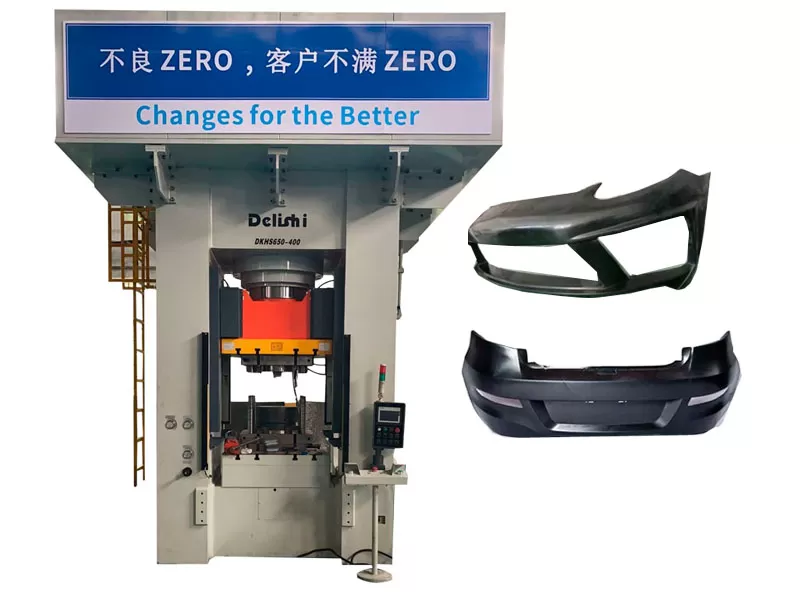
Classification by structural form
● Four-column hydraulic press
This is one of the most common types of construction in bumper forming hydraulic presses. A structure with three beams and four columns, i.e., an upper beam, a lower beam, and two movable beams connected by four columns to form a closed rigid frame. This structure is economical and practical, simple to operate, has good body stability, and can withstand large working pressure. It is suitable for the production of bumpers of various scales, and has good adaptability to the molding of medium and large bumpers, and can realize two forming processes: constant pressure and fixed range.
● Frame hydraulic press
The main frame is made of integral welding or integral casting, which has high rigidity and precision, and strong anti-eccentric load capacity. The frame structure can better ensure the clamping accuracy of the mold, and for some bumper products with high requirements for molding accuracy, such as the bumper of high-end automobiles, the frame hydraulic press is an ideal choice.
● Single-arm hydraulic press
The frame is a monolithic cast steel structure or steel plate welded structure, the structure is relatively simple, the operation is convenient, and the workpiece can be approached from three directions. Single-arm hydraulic press is usually suitable for the forming process of small bumpers or bumpers of specific shapes, as well as some small-scale production or pilot production.
● Gantry hydraulic press
Similar to gantry, with a large working table and strong bearing capacity, suitable for the forming and processing of large bumpers or large parts. Its structural characteristics make the equipment maintain good stability when working, and it has advantages for the molding of some bumper products with larger size and more complex shape.
Classification by working style
● Ordinary hydraulic press
The conventional hydraulic control mode is adopted, and the motion control of the hydraulic cylinder is realized through the hydraulic pump, control valve and other components, and the forming process of the bumper is completed. This type of hydraulic press is simple to operate, relatively low cost, and suitable for the forming production of most conventional bumpers.
● Servo hydraulic press
The servo motor is used to drive the hydraulic pump, which can more accurately control the pressure, flow and speed parameters of the hydraulic system. Servo hydraulic press has the advantages of high precision, fast response speed, energy saving, etc., for some bumper products with high requirements for molding accuracy and quality, such as bumper of high-performance automobiles, servo hydraulic press can provide better forming effect.
Classification by application
● Universal bumper forming hydraulic press
It can be applied to bumper forming of various types and materials, and has a wide range of applicability. By changing different molds, bumpers of different shapes, sizes and materials can be produced to meet the needs of different customers.
● Special bumper forming hydraulic press
The hydraulic press machine specially designed for a specific type or material bumper, its structure and performance parameters have been optimized to better meet the forming requirements of this kind of bumper. For example, the hydraulic press machine for plastic bumpers forming will be specially designed and optimized in terms of temperature control and pressure regulation; For the molding hydraulic press of composite bumpers, more attention will be paid to the control of pressure uniformity and temperature stability in the molding process


 +86-769-8306-1993
+86-769-8306-1993
 E-mail
E-mail
